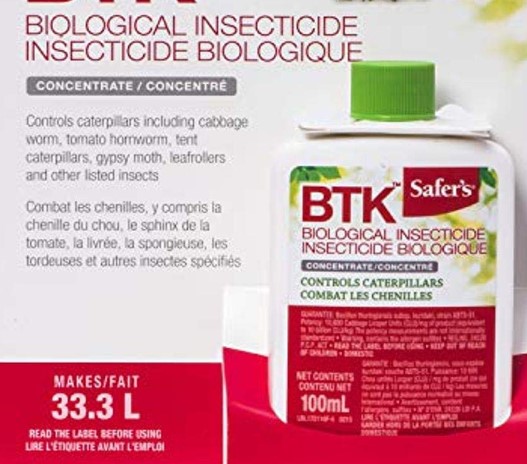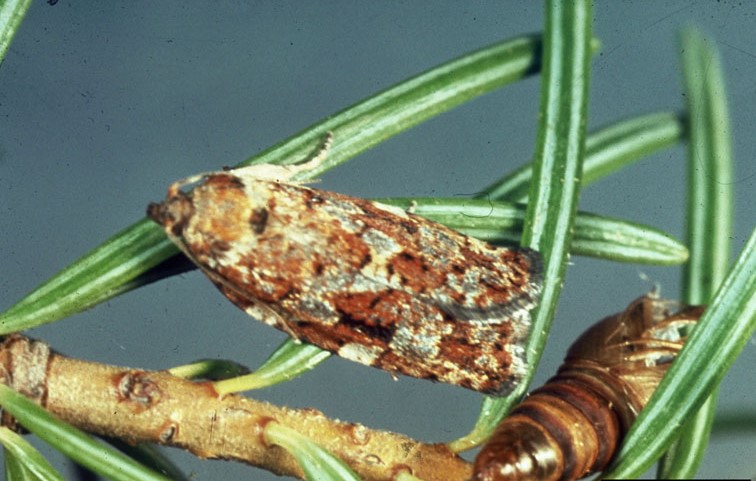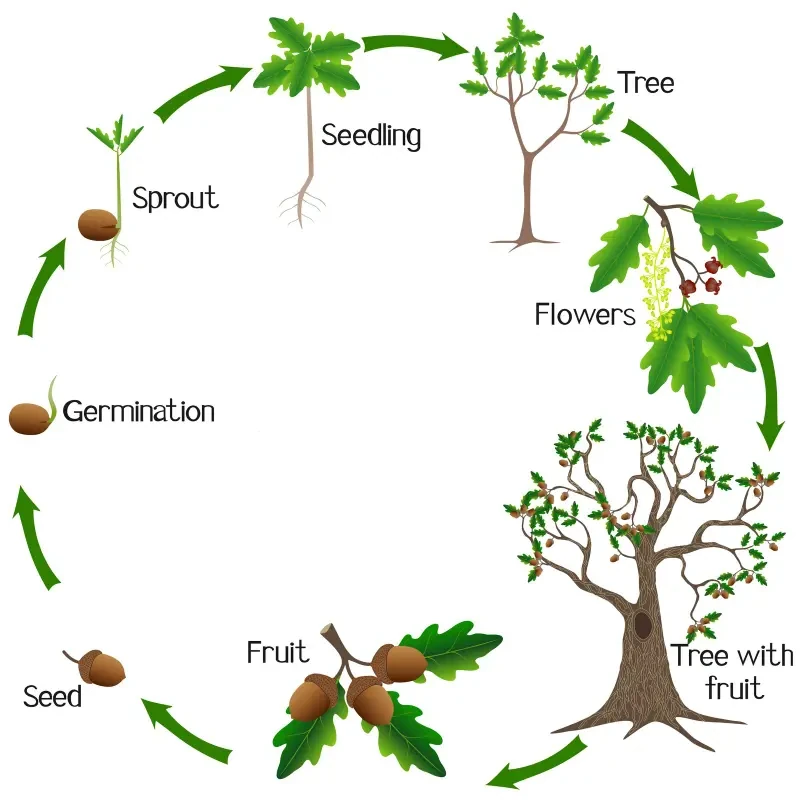The spruce budworm (Choristoneura fumiferana) is a destructive pest that primarily targets spruce, balsam fir trees, and sometimes Larch, posing a significant threat to forests, including residential areas. Understanding the lifecycle, signs of infestation, and potential effects on your trees is essential for effective management and prevention. This blog will provide practical information for homeowners to identify and address spruce budworm damage on their properties.
Table of Contents
- What is the Spruce Budworm?
- Overview of the pest and its lifecycle
- Signs of Infestation
- Visual indicators of spruce budworm damage
- How to monitor your trees
- Impact on Trees and Ecosystems
- Effects on tree health and growth
- Broader implications for local ecosystems
- Management Strategies
- Cultural practices to prevent infestation
- Biological and chemical control options
- When to Seek Professional Help
- Indicators that require expert intervention
What is the Spruce Budworm?

The spruce budworm (Choristoneura fumiferana) is a small caterpillar that primarily feeds on the buds and needles of spruce and balsam fir trees. This pest is native to North America and has been a recurring issue in many forested regions. Understanding its lifecycle and behavior is crucial for anyone managing affected trees.
Lifecycle of the Spruce Budworm
- Egg Stage: The lifecycle begins when female moths lay their eggs in late spring, typically in clusters on the underside of tree needles. Each female can lay hundreds of eggs.
- Larval Stage: Once the eggs hatch, the larvae emerge as small caterpillars. This is the most destructive stage, as the young caterpillars feed voraciously on the new growth of the tree, particularly the buds and tender needles. This feeding usually starts in early summer and can last for several weeks.
- Pupal Stage: After growing and molting several times, the larvae eventually enter the pupal stage. They spin a cocoon, usually in the tree canopy or on nearby vegetation, where they undergo metamorphosis.
- Adult Stage: After a couple of weeks, the adult moths emerge to start the cycle anew. The adult moths are brownish and about an inch in wingspan, but they are rarely seen due to their nocturnal nature.
Why It Matters
The spruce budworm can severely weaken trees by stripping away their leaves, which are essential for photosynthesis. Affected trees may exhibit yellowing needles, stunted growth, and increased susceptibility to diseases. In severe infestations, entire stands of trees can be killed, leading to ecological imbalances and economic losses in timber resources.
For homeowners, understanding the spruce budworm’s lifecycle allows you to identify the problem early and take action. Recognizing the signs of infestation—such as chewed needles and browning foliage—can help you protect your trees before the damage becomes severe.
Signs of Infestation

Identifying a spruce budworm infestation early is crucial for managing and mitigating damage to your trees. Here are the key signs to look for when inspecting your spruce and balsam fir trees:
Visual Indicators
- Chewed Needles and Buds: The most noticeable sign of a spruce budworm infestation is the presence of chewed needles and buds. The larvae feed on the new growth, leaving behind notched or completely stripped areas. Inspect the ends of branches for any signs of this damage.
- Browning and Yellowing Foliage: Affected trees may exhibit yellowing or browning needles, particularly on the upper portions of the tree. As the infestation progresses, the color may shift to a dull brown, indicating that the tree is stressed.
- Webbing or Silk: In some cases, you may notice fine webbing or silk strands on the branches. This is produced by the larvae and can be a clear indicator of their presence.
- Tree Decline: Over time, infested trees may show signs of decline, such as reduced growth, branch dieback, or overall poor health. If your trees are not thriving as they should, it may be a result of spruce budworm activity.
Monitoring Your Trees
Regular inspections are essential, especially during the peak feeding season in late spring and early summer. Here’s how to effectively monitor your trees for signs of infestation:
- Visual Checks: Walk around your property and visually inspect your spruce and balsam fir trees. Look closely at the new growth, as this is where the budworm is most active.
- Sampling Method: For a more detailed assessment, consider using a sampling method. Shake a few branches over a white sheet or piece of paper to see if any small caterpillars fall out. This can help confirm the presence of spruce budworm larvae.
- Keep an Eye on Nearby Trees: If you notice infestations in neighboring properties, be vigilant. Spruce budworms can easily spread from one tree to another.
By familiarizing yourself with these signs and monitoring your trees regularly, you can catch a spruce budworm infestation early, allowing for timely management and potentially saving your trees from significant damage.
Impact on Trees and Ecosystems

Understanding the impact of spruce budworm infestations on your trees and the surrounding ecosystem is vital for effective management. Here are the primary effects of this pest on both individual trees and the broader environment.
Effects on Individual Trees
- Defoliation: The most immediate effect of a spruce budworm infestation is defoliation, where the caterpillars consume the new growth, including buds and needles. This can lead to significant stress on the tree, as it loses its ability to photosynthesize effectively.
- Reduced Growth: Trees affected by spruce budworms often experience stunted growth. With a lack of foliage, trees are unable to produce the energy they need to grow and thrive, leading to smaller, weaker specimens over time.
- Increased Vulnerability to Diseases: Defoliated trees are more susceptible to diseases and other pests. The stress from budworm feeding can weaken their natural defenses, making them prime targets for opportunistic pathogens and insects.
- Tree Mortality: In severe cases, prolonged infestations can lead to tree death. If a tree is unable to recover after repeated years of defoliation, it may ultimately succumb to stress-related factors, including drought and disease.
Broader Ecosystem Implications
- Habitat Disruption: Spruce and balsam fir trees provide essential habitats for numerous wildlife species. Infestations that lead to tree decline can disrupt these habitats, affecting birds, mammals, and insects that rely on healthy forests.
- Biodiversity Loss: As affected trees die off, the overall biodiversity of the area can decrease. Healthy forests support a wide range of plant and animal species, and their decline can lead to habitat fragmentation and loss of species diversity.
- Altered Forest Composition: If spruce trees are heavily impacted and not replaced, there can be a shift in forest composition. Other tree species may move in, leading to changes in the ecosystem dynamics and potentially affecting soil health and water cycles.
- Economic Impact: For homeowners and communities relying on forestry, the economic consequences of spruce budworm infestations can be significant. Loss of timber resources and reduced property values can result from declining tree health and forest quality.
Understanding these impacts highlights the importance of early detection and proactive management of spruce budworm infestations. By addressing these issues promptly, you can help protect not only your trees but also the surrounding ecosystem they support.
Management Strategies

Effectively managing a spruce budworm infestation requires a combination of proactive and reactive strategies. Here are several approaches you can take to protect your trees and mitigate the effects of this pest.
Cultural Practices
- Regular Monitoring: Conduct regular inspections of your spruce and balsam fir trees, especially during the peak feeding season in late spring and early summer. Early detection is key to managing infestations.
- Healthy Tree Maintenance: Promote the overall health of your trees through proper care. This includes adequate watering, mulching, and fertilizing. Healthy trees are better equipped to withstand pest attacks and recover from damage.
- Pruning: Remove and dispose of heavily infested branches to reduce the population of spruce budworms. Pruning should be done carefully, ensuring that cuts are clean to prevent further stress on the tree.
Biological Control
- Natural Predators: Encourage the presence of natural predators, such as birds and beneficial insects, which can help keep spruce budworm populations in check. Installing birdhouses or planting diverse vegetation can attract these helpful species.
- Bacillus thuringiensis (Bt): This naturally occurring bacterium can be applied to infested trees and is effective in targeting spruce budworm larvae without harming beneficial insects. Timing is crucial; apply it when larvae are actively feeding.
Chemical Control
- Insecticides: If infestations are severe and other methods are insufficient, consider using insecticides. Products containing active ingredients such as permethrin or carbaryl can be effective, but they should be applied carefully to minimize impact on non-target species. Always follow label instructions and local regulations.
- Timing of Application: Apply insecticides during the early larval stage (late spring to early summer) for maximum effectiveness. Timing is crucial, as treating when larvae are small is more effective than waiting until they have grown.
| Chemical | Type | Toxicity Level | Ease of Application | Effectiveness on Spruce Budworm |
|---|---|---|---|---|
| Bacillus thuringiensis (Bt) | Biological Insecticide | Low | Easy | High |
| Dimethoate | Organophosphate Insecticide | Moderate to High | Moderate | High |
| Malathion | Organophosphate Insecticide | Moderate | Easy | Moderate to High |
| Trichlorfon | Organophosphate Insecticide | Moderate to High | Moderate | Moderate |
Insecticide Options for Spruce Budworm Management
1. Bacillus thuringiensis (Bt)
- Type: Biological Insecticide
- Toxicity Level: Low
- Ease of Application: Easy
- Effectiveness: High
Overview: Bacillus thuringiensis is a naturally occurring bacterium that produces proteins lethal to specific insects, particularly in their larval stages. It is highly selective, making it an ideal choice for targeting spruce budworm larvae without harming beneficial insects.
Advantages:
- Safe for humans, pets, and wildlife.
- Targets only caterpillars, minimizing effects on non-target species.
- Most effective when applied during the early stages of larval feeding.
Disadvantages:
- Requires careful timing, as it must be applied when larvae are actively feeding.
2. Dimethoate
- Type: Organophosphate Insecticide
- Toxicity Level: Moderate to High
- Ease of Application: Moderate
- Effectiveness: High
Overview: Dimethoate is a broad-spectrum insecticide that disrupts the nervous system of various pests, including spruce budworm.
Advantages:
- Rapidly effective against multiple life stages of pests.
- Can be applied as a foliar spray or soil drench.
Disadvantages:
- Higher toxicity levels require careful handling and protective gear.
- Can adversely affect beneficial insects.
3. Malathion
- Type: Organophosphate Insecticide
- Toxicity Level: Moderate
- Ease of Application: Easy
- Effectiveness: Moderate to High
Overview: Malathion is a commonly used insecticide that offers moderate effectiveness against a variety of pests, including spruce budworm. It is widely available for home use.
Advantages:
- Simple to apply as a spray and accessible at garden centers.
- Provides relatively quick action against pests.
Disadvantages:
- Moderate toxicity necessitates precautions to reduce risks to humans and beneficial organisms.
- Potential for pest resistance with repeated applications.
4. Trichlorfon
- Type: Organophosphate Insecticide
- Toxicity Level: Moderate to High
- Ease of Application: Moderate
- Effectiveness: Moderate
Overview: Trichlorfon is another organophosphate that affects the nervous system of insects, frequently used for a range of pests in agricultural and forestry applications.
Advantages:
- Effective against various pests, including larvae.
- Can be combined with other pest control methods for enhanced effectiveness.
Disadvantages:
- Requires careful handling due to potential toxicity to humans and non-target species.
- Generally less effective than dimethoate, which may necessitate multiple applications.
When to Seek Professional Help

If you notice significant infestation signs or if the population seems unmanageable, it may be time to consult with a local arborist or pest management professional. They can provide expert advice tailored to your specific situation and help develop a comprehensive management plan.
By employing these management strategies, you can effectively combat spruce budworm infestations and help protect your trees and the broader ecosystem. Early intervention and a combination of approaches are key to minimizing damage and promoting healthy forest growth.
Indicators for Professional Help
- Severe Infestation: If you observe widespread defoliation or multiple trees showing signs of heavy infestation, it may be beyond your control. Professionals have the tools and knowledge to assess the extent of the problem and recommend effective treatments.
- Rapid Decline in Tree Health: If your trees are showing rapid signs of decline—such as excessive yellowing, dieback, or reduced growth—it’s crucial to consult an expert. They can help determine whether the spruce budworm is the primary culprit or if other factors are at play.
- Limited Experience with Pest Management: If you’re unfamiliar with pest management practices or unsure how to implement recommended strategies, a professional can guide you through the process and ensure that you’re using the most effective and safe methods.
- Need for Comprehensive Assessment: A certified arborist can provide a thorough assessment of your property’s trees and overall health. They can identify potential risks and recommend a long-term management plan that includes pest control, tree care, and species diversification.
- Regulatory Compliance: In some areas, specific regulations govern the use of pesticides and other treatments. A professional can ensure that you comply with local laws and use the appropriate methods safely.
Finding the Right Professional
When seeking help, consider the following:
- Credentials: Look for certified arborists or pest management specialists with experience in dealing with spruce budworm and other forestry issues.
- Local Expertise: Choose professionals familiar with your unique ecosystem and the specific challenges of spruce budworm infestations.
- Recommendations: Ask for recommendations from neighbors, local gardening centers, or community organizations focused on forestry and conservation.
By recognizing when to seek professional help, you can effectively address spruce budworm infestations and promote the long-term health of your trees and the surrounding environment. Remember, timely intervention can make a significant difference in managing pests and restoring the vitality of your forested areas.




